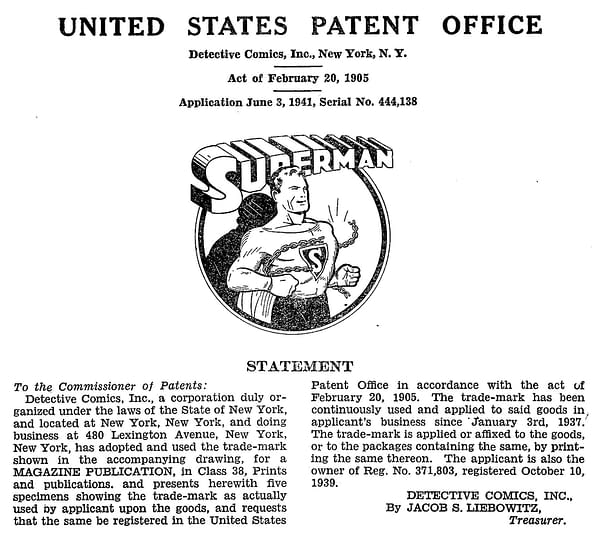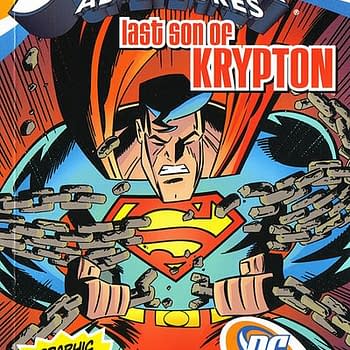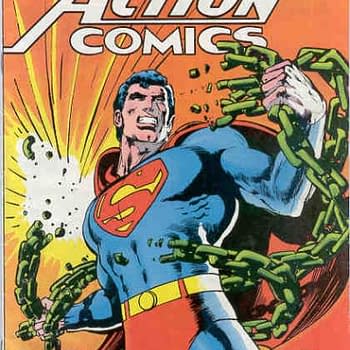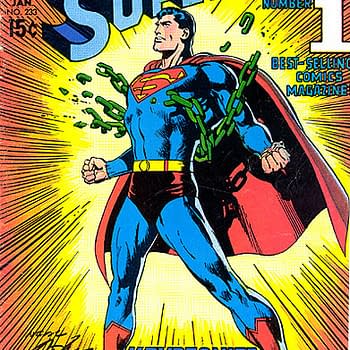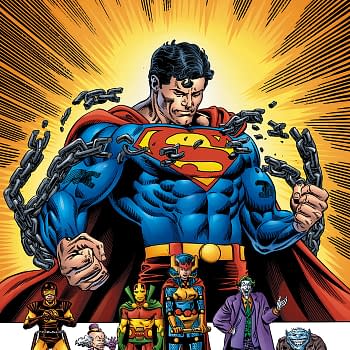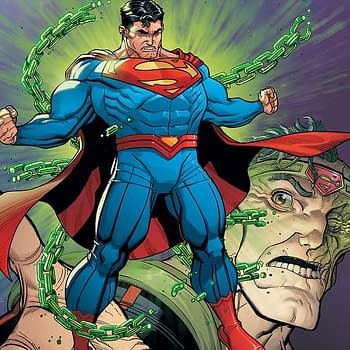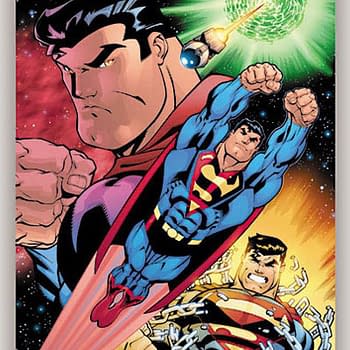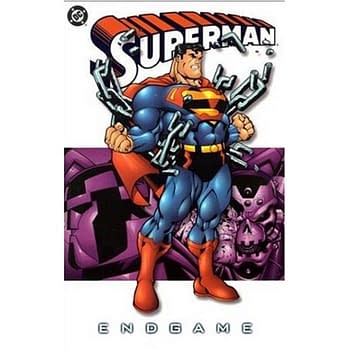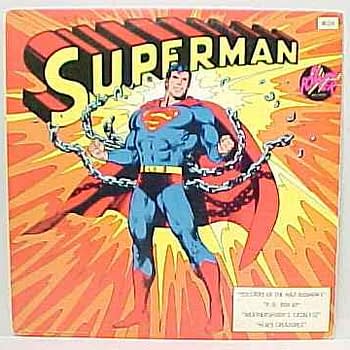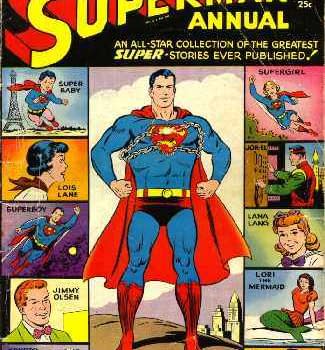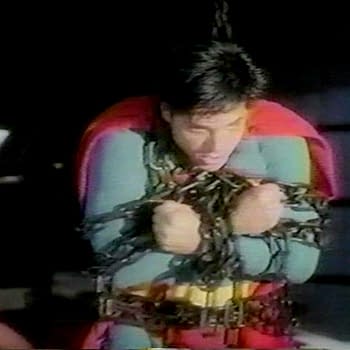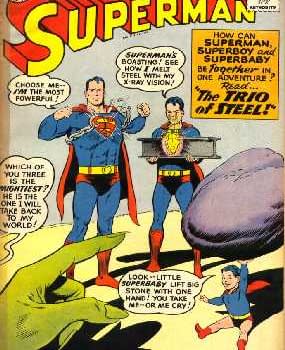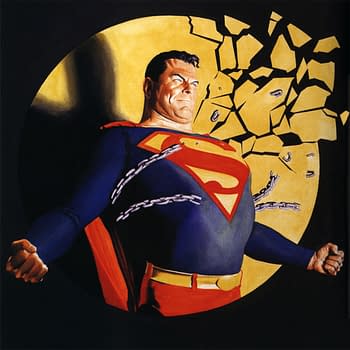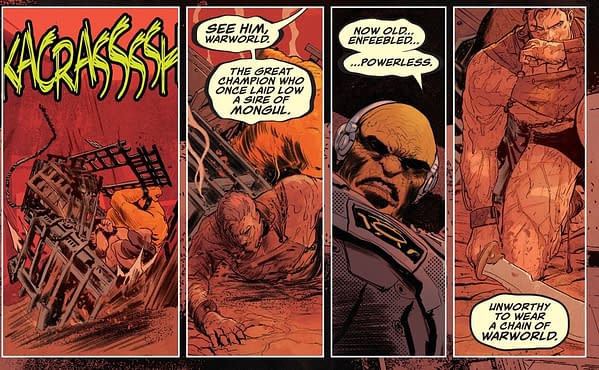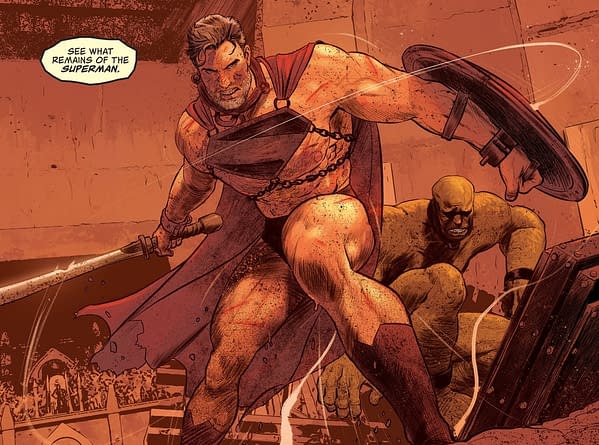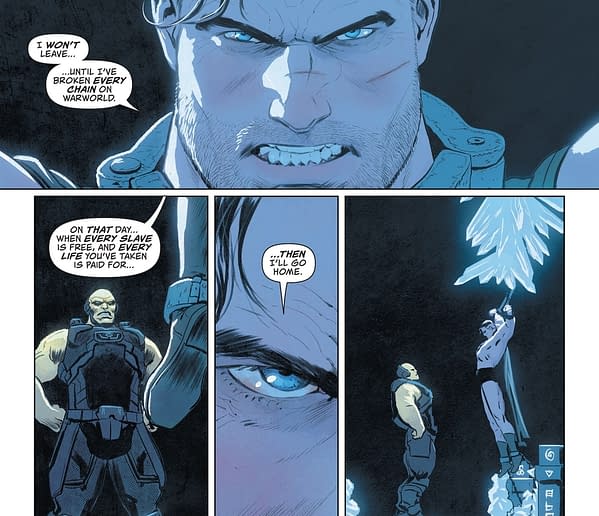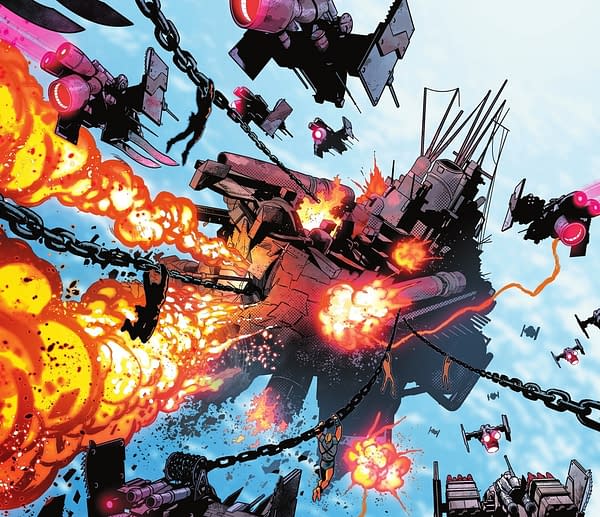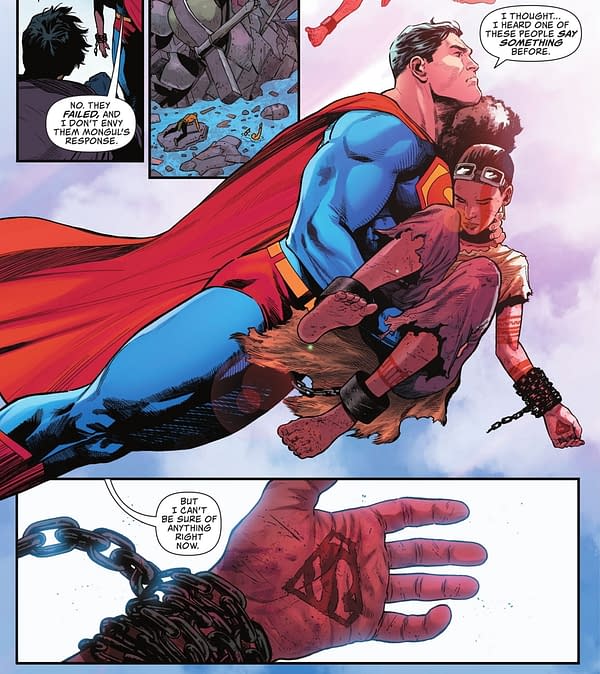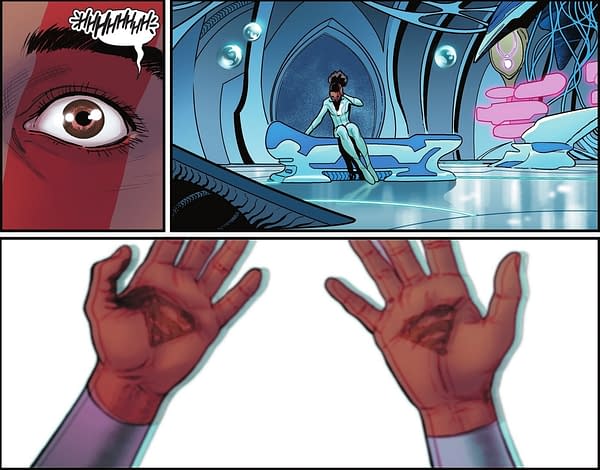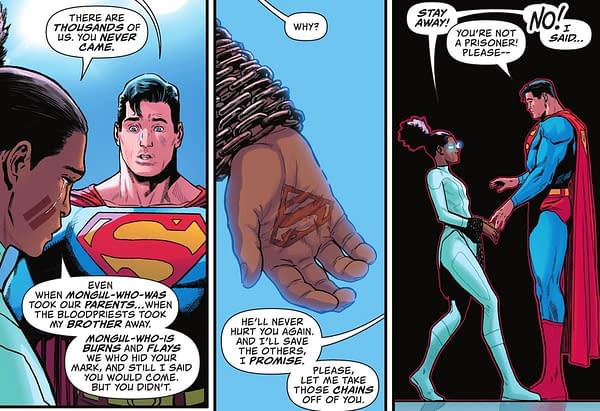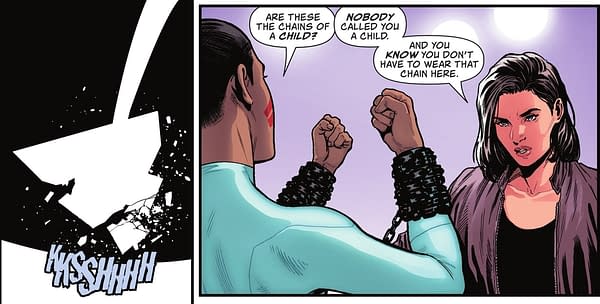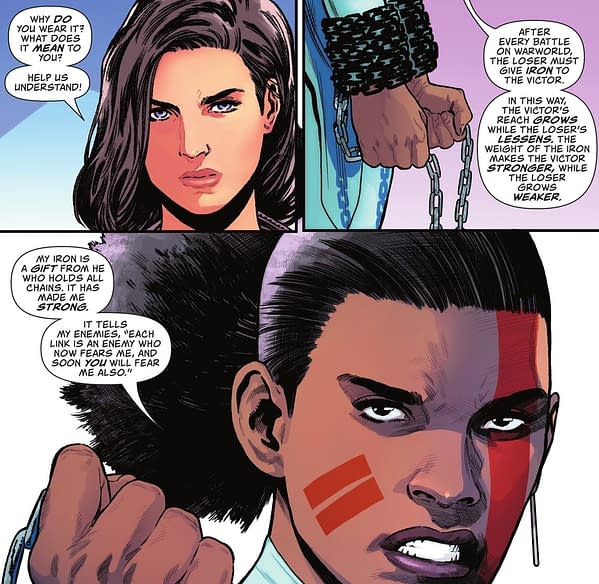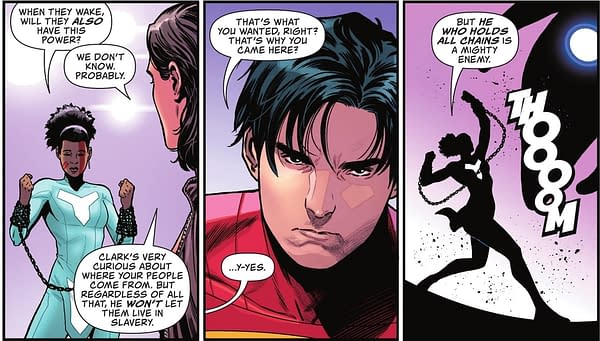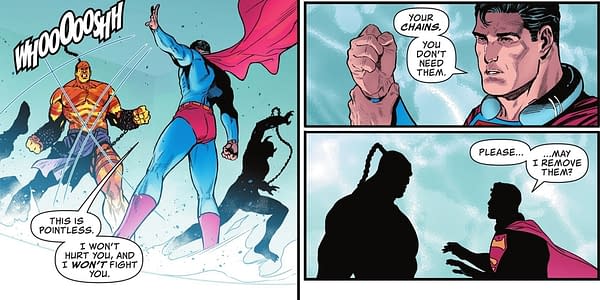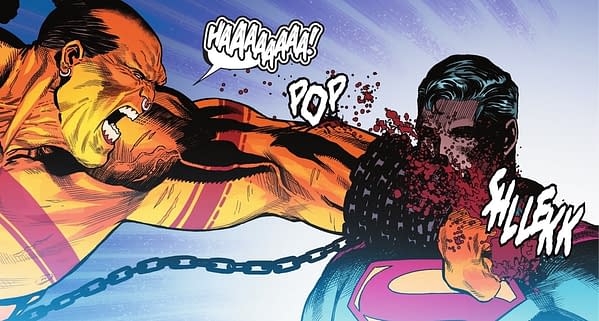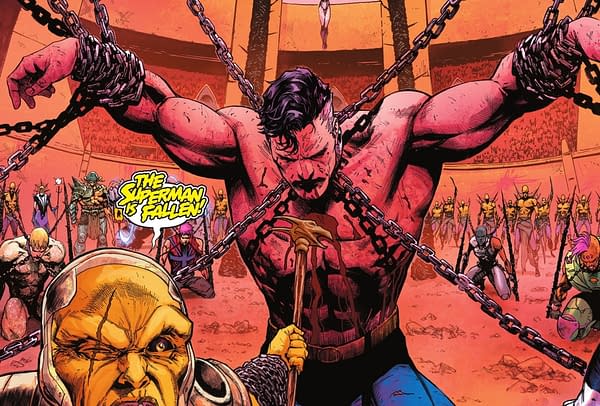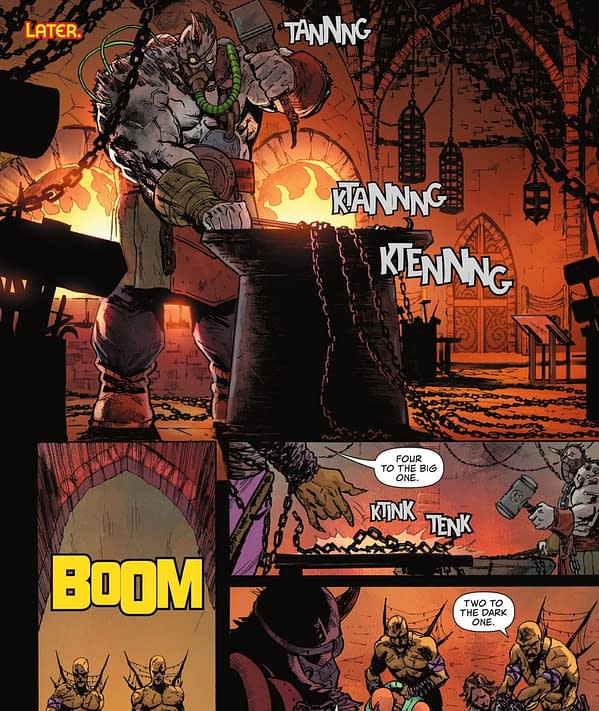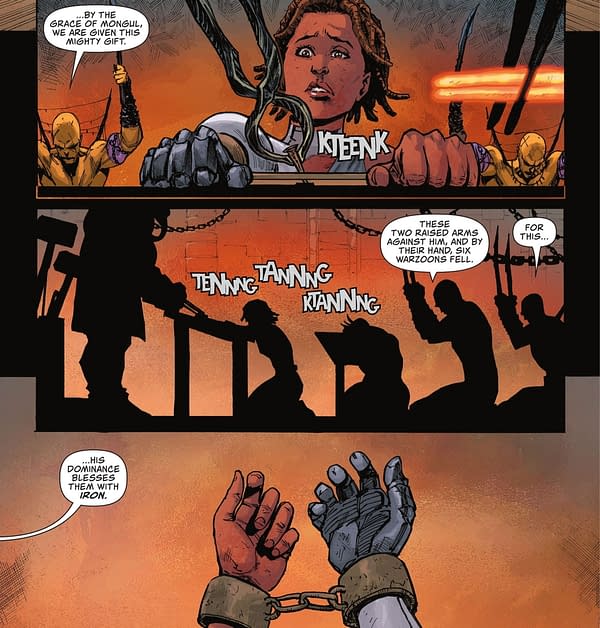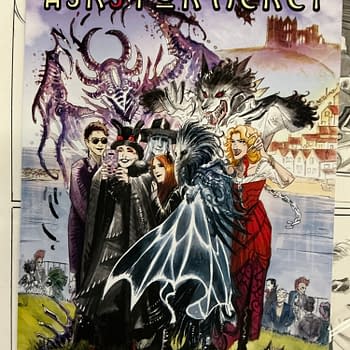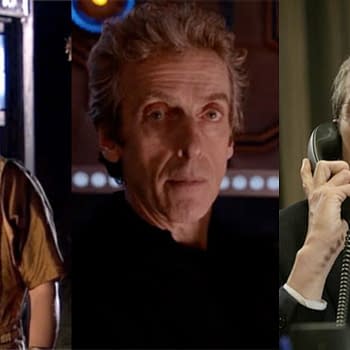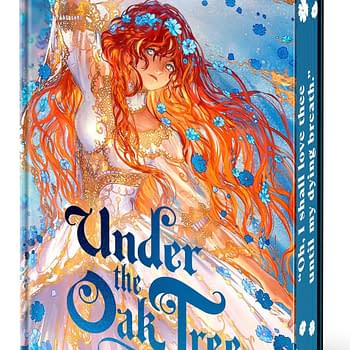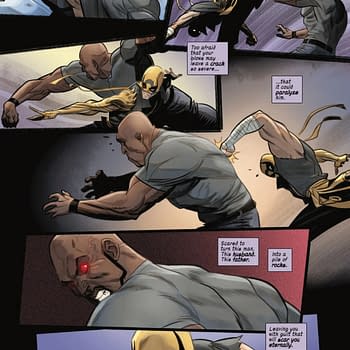Posted in: Comics | Tagged: action comics, dc comics, phillip kennedy johnson, superman
Superman, The Politics Of WarWorld & The Chains That Bind (Spoilers)
One of the original central images of Superman was that of him snapping chains held across his chest. It also spoke to the design roots of the character, a circus strong man, which included trunks worn over tights. Ripping phone books in half, lifting large dumb bells, breaking bricks and snapping chains.
The chain image was so notable, it was trademarked by DC Comics, and has been reprised repeatedly since. Superman breaks chains; it's an intrinsic part of the character. It symbolises freedom, breaking the chains of tyranny and oppression. Truth, Justice and the American Way.
But what if someone doesn't want those chains broken? In recent Superman stories in DC Comics, Phillip Kennedy Johnson has been telling a story for the last couple of years. It began with Future State: Superman: Worlds Of War set in the near future, which saw Superman exiled Earth and trapped on Warworld, under the rule of Mongul's son, also called Mongul, trapped and forced to fight and die, be revived and fight again.
In that first chapter, Mongul describes him as "unworthy to wear a chain of Warworld".
The other warriors all wear chains, with Superman placed to break them.
When he is not restrained by them.
With the series concluding with a Superman-led revolt, the citizens of WarWorld holding their broken chains aloft.
Then Phillip Kennedy Johnson took over writing the ongoing Action Comics series for Infinite Frontier and a few issues in, it all got real. As Superman had to deal with alien refugees from Warworld, in ships chained together.
And rescued as many of the refugees as he could, all wearing chains.
But these chains weren't so easy to break.
Indeed, when they were removed, the refugees wanted to put them right back on again.
The chains were more than something to keep the refugees as prisoners, as slaves on Warworld. They had also become part of their identity.
And the repeated instincts of Superman and his friends to remove those chains, to break those chains…
… was repeatedly rejected. There were explanations that came but none that the Superman Family were happy to hear.
And while they want their freedom, the chains remain part of their identity.
Even if its something that no Superman can quite get their head around.
With predictable results.
And so now Superman has gone to Warworld to free the slaves of that planet. He does so with a rag-tag band of superheroes he has gathered together as both the Justice League and the United Planets have not backed him up, some wanting more information, some wanting more time, some wary of the consequences. With Superman himself in a reduced power situation and looking older than ever, ravaged by alien interdimensional energy. But this is Superman, he doesn't wait, and the result is as predictable as it was shown to be in Future State.
As for his compatriots, those who survived the initial assault on Warworld, they get the respect meted out to all warriors of the planet.
They get their own chains. And new links to reward their prowess on the field of battle.
Something that is denied Superman himself. Over these past two years, Phillip Kennedy Johnson has written a far more complex Warowlrd than we have seen before, without the black-and-white answers that Superman usually prefers. Superman has a colonial "white saviour" complex, barging in to save the day without realising that his input may not be initially appreciated by a population that has learned to value and appreciate aspects of their slavery in terms of identity. Despite being given all the clues by meeting the escaped slaves, his might-makes-right American exceptionalism approach has failed to understand the intricacies of how people take aspects of their oppression and use them to oppress others, or give themselves value in the eyes of their oppressors. It is as much psychological slavery as it is physical. It's I Know Why the Caged Bird Sings meets Uncle Tom's Cabin meets the practice of some emancipated slaves in the USA keeping pieces of cut rope to symbolise their experiences. It's complex, it's nuanced, and it's disturbing. It seems also a criticism of the concept and tropes implicit in that of the superhero while also explicitly recognising the power of hope that they embody. And… it's in a Superman comic book as well. Who knew?
Phillip Kennedy Johnson has been active in anti-human trafficking volunteer work in Baltimore, and it was this that inspired the chain aspects of this story. After talking to him about this article, he told me;
One aspect of anti-human trafficking work that haunts me is how profoundly trapped human trafficking victims often are, usually more psychologically than physically. Most trafficking victims I've known don't see themselves as such… they don't think they have a pimp or a trafficker, they have a "boyfriend." Sure, he hurts them and sells them and keeps every penny, but he's all they have now. Whatever their life used to look like, whatever loved ones were once in their life, whatever tools or talents they might once have had, their trafficker took that all away, and the dehumanizing abuse and lies and suffering are all they have left. If some would-be savior comes along and tries to take that away, by threatening their trafficker or their relationship with that trafficker, they'll fight tooth and nail to protect it. That can make it incredibly difficult to help them.
To me, the truest antithesis to Superman—Champion of the Oppressed, defender of Truth and Justice, a man of utter compassion and humility–would be a slaver. A despot who controls an empire of slaves not just with physical chains and violence, but by brainwashing them with constant lies. This newest Mongul has given Superman the greatest challenge of his life, and it's not kryptonite or red suns or monsters from another dimension. It's the millions of slaves he's brainwashed into worshipping him, who desperately need Superman but hate him and won't accept his help. I know what that helplessness and frustration feels like. And selfishly, I needed Superman to show me how a hero faces an enemy like that.
Action Comics #1038 is in comic book stores now.
ACTION COMICS #1038 CVR A DANIEL SAMPERE
(W) Phillip Kennedy Johnson, Shawn Aldridge (A) Daniel Sampere, Adriana Melo (CA) Daniel Sampere
"The Warworld Saga," part three. Everything changes! After the heart-stopping events of Action Comics #1037, Superman and the surviving members of the Authority see a side of Warworld they never knew existed. In the lower catacombs, Superman finds another survivor of the lost Phaelosian race of Krypton, a scientist turned enslaved gladiator with much to teach Superman of his new home, including how to survive…and maybe, in time, how to escape. Meanwhile, Superman's quest to turn the hordes of Warworld against their masters begins. Retail: $4.99 In-Store Date: 12/28/2021


